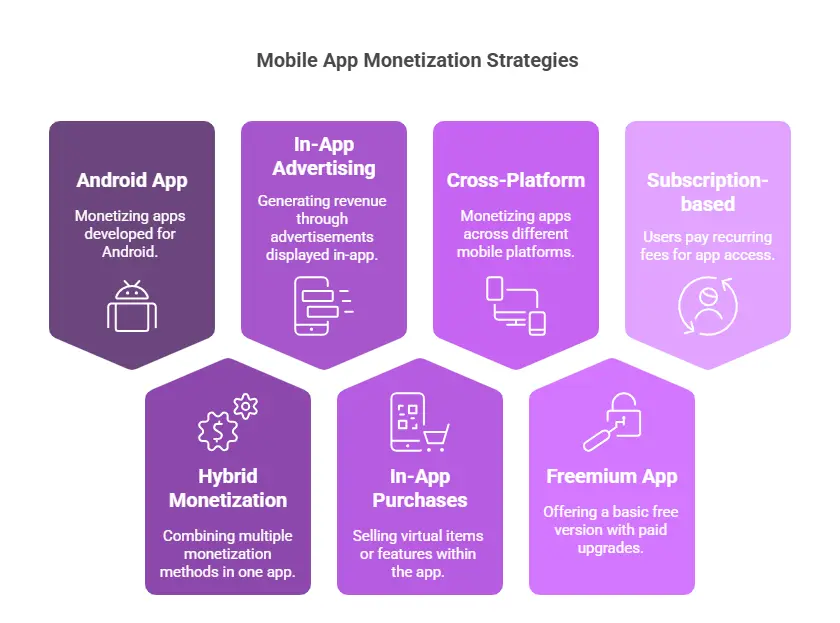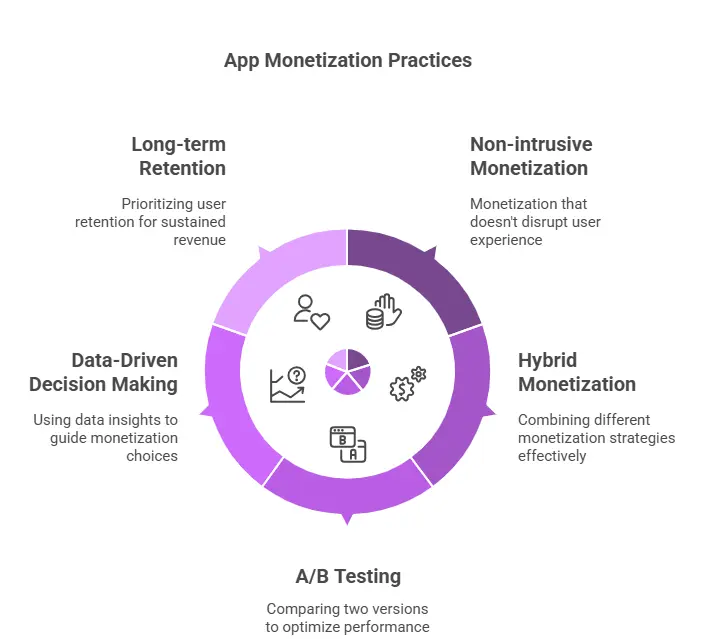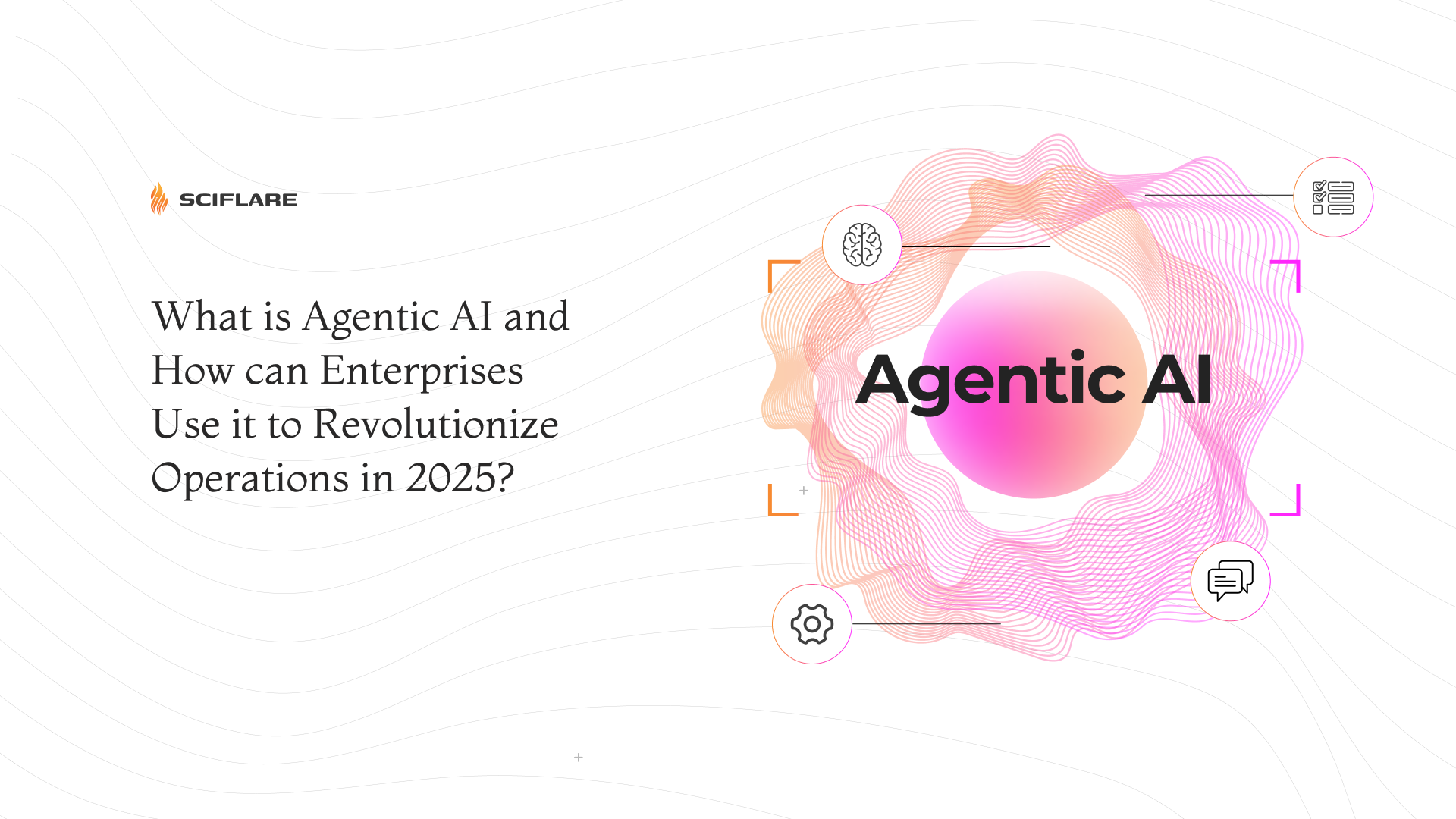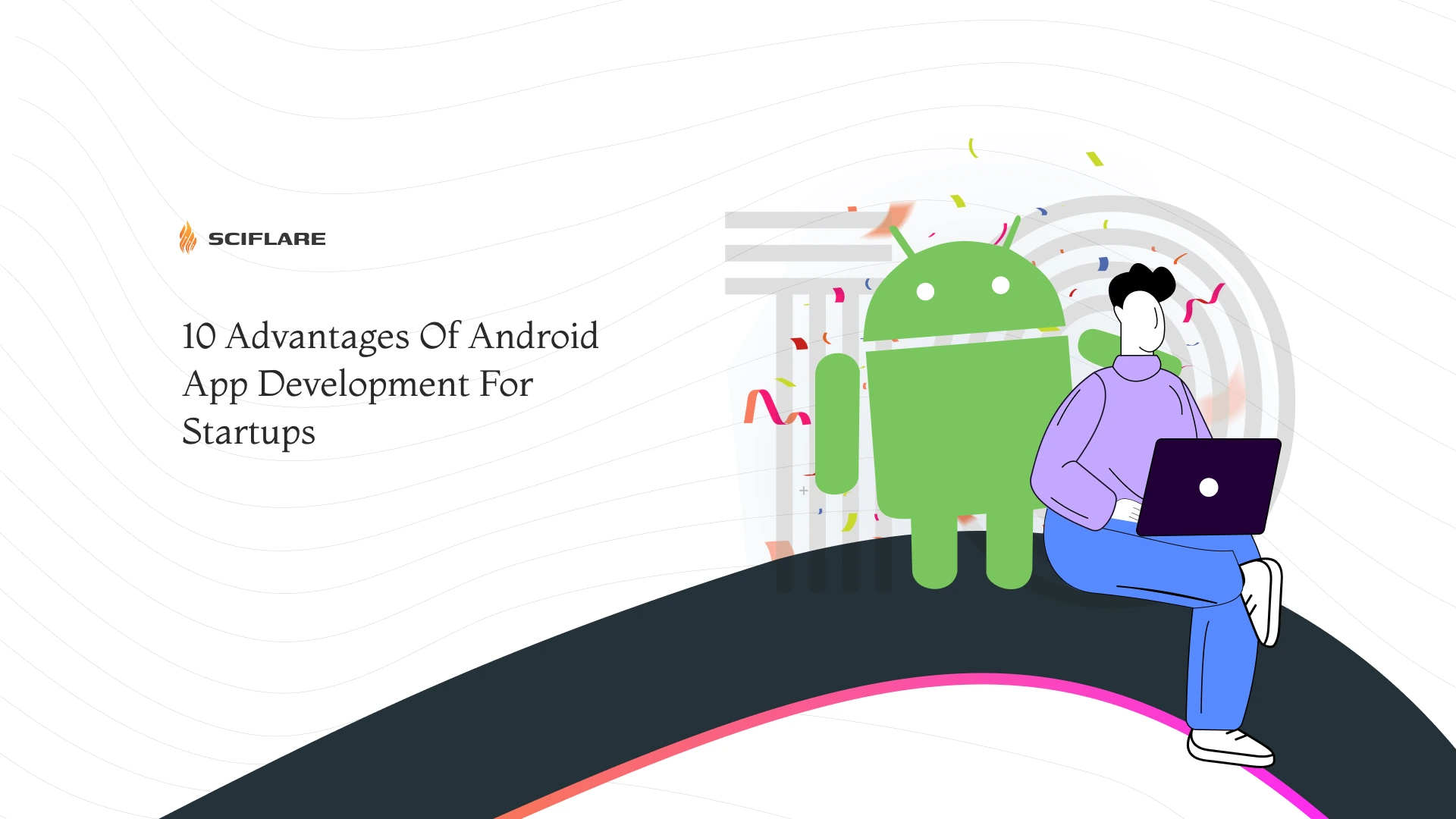**Quick Summary:**
App monetization is the process of making money or generating revenue from a mobile or web app.
App monetization strategies should be immune to macroeconomic factors, market conditions, and users’ evolving budget preferences.
Hybrid app monetization is on the rise as businesses look for more ways to expand revenue sources and understand how users engage with the same mobile app in different ways.
Cross-platform app monetization ensures users are not limited to one device and can seamlessly blend their devices into their digital-first lifestyles.
Monitoring and chasing user engagement metrics that offer the complete picture of your app’s performance and user preferences is important.
Introduction:
App monetization, or the process of making money from a mobile or web app, is the cornerstone of success for all businesses serving their customers digitally. It determines how successfully a business has been able to execute its idea into a viable income opportunity and built something that customers are willing to pay for. 2025 is a crucial year, followed by the cascading effect of macroeconomic headwinds of 2023, an attempt at survival, and careful balance in 2024. This necessitates businesses to ensure that their app monetization strategies are full-proof and immune to all factors that determine their success.
Like a jigsaw puzzle that comes together after placing all pieces in the necessary order for the complete picture, app monetization is influenced by big and small factors alike, considering all of which in accurate proportions are necessary for its success. So, what are the app monetization trends for 2025, and what strategies have worked best for mobile app businesses worldwide? Find out in our data-driven blog.
Mobile App Monetization Strategies:

It is a well-known fact that users’ lifestyles are digital-first, with an average user spending approximately 3 hours 45 minutes daily on mobile apps (as opposed to browsers), accounting for 90% of their time spent daily on smartphones. With a plethora of apps for every activity a human does on a day-to-day basis, engaging users fruitfully to claim the top spot on their home screens (and avoid uninstalls) is crucial. This is where understanding mobile app monetization strategies will help any business looking to monetize their new app or rethink monetization for an existing one. With that said, let’s understand major trends seen worldwide:
1. Android App Monetization
According to a Statista report on the distribution of free and paid Android apps from 2019-2025, 97% of all Android apps were free, due to which the Google Play Store accounted for only 3.01% of all paid apps. This presents a major challenge for mobile app businesses and developers to come up with innovative strategies for generating revenue from their apps. While in-app purchases (IAP), advertisements, and freemium subscriptions emerged as the top Android monetization strategies for 2024, it must be noted that iOS users are more likely to spend more on in-app purchases than Android users, who tend to respond to push notifications better. This is visible from the App Store revenue of $13.5 billion in 2021, as compared to the Google Play Store revenue of $4.8 billion in the same year.
This deduces the need to tailor app monetization strategies for each platform, based on platform-specific user attributes, and create value by meeting their evolving budget preferences, usage needs, and expectations from digitization.
2. Hybrid Monetization
Hybrid monetization witnessed increased adoption in 2024, with market players feeling the need to expand their revenue sources. However, the need for a careful balance was observed as businesses wanted to avoid jeopardizing their primary revenue streams. With that said, businesses were open to exploring other revenue options stemming from evolving user needs, extending an app’s USP to a wider user base, catering to niche users, and making their apps more accessible.
While the hybrid monetization strategy for mobile apps is widely preferred because of its ability to understand that users engage with the same mobile app in different ways, its success depends on how well you can balance ads and in-app purchases, not compromise on user experience, manage data regulation requirements, and cater to the IT infrastructure requirements of each monetization strategy.
3. In-App Advertising (IAA)
In-app advertising is a popular marketing strategy where businesses serve targeted ads to their customers through a mobile ad network. Its popularity stems from the fact that nearly 97% of the apps on the Google Play Store are free to download, making it one of the most dominant ways for monetizing Android apps with the right strategies. However, the retention rate for IAA varies for each app category.
A Statista report states that the in-app advertising market worldwide is expected to reach USD 390. O4 billion by 2025, with in-app advertisements delivering approximately 150% higher conversion rates than mobile web ads. This indicates that users are more likely to convert from apps that can retain them and serve contextual relevance via ads tailored to their needs. The success of the in-app advertising revenue model depends upon the suitable IT infrastructure, ability to learn from users’ habits and tailor ads to their preferences and optimizing on times when they are most active and most likely to convert.
4. In-App Purchases (IAP)
A report by the Business Research Company states that the in-app purchase market size will grow at a CAGR of 23% from $209.13 billion in 2024 to $257.23 billion in 2025. This exponential growth within a short period is rightly attributed to increased smartphone penetration, enhanced internet accessibility, evolving content consumption needs, and growing need for diversified app monetization strategies.
Factors propelling higher conversion for in-app purchases revolve around improving digital goods or services accessibility for users, such as, AR/VR integration for more immersive experiences, hyper-personalization for greater relevance, smarter computing capabilities in smartphones, seamless payment integrations within apps and enhanced quality and speed of video streaming, which enables users to gain required experience information and make purchase decisions easily. App categories that benefit more from in-app purchases include health and fitness apps, gaming apps, e-commerce websites, and video streaming services among others.
5. Cross-Platform Monetization
If you are looking for an answer on how to maximize mobile app revenue, effective cross-platform monetization is a no-brainer strategy. As digital-native users increasingly prefer more connected experiences, using the same app across different devices has become the norm. As such, this gives businesses multiple touchpoints to communicate their value props to customers and leverage each device ecosystem’s unique strengths to monetize their app.
Tailoring content to users’ preferred device- be it smartphones, TVs, tablets, or computers does not limit users’ interaction options and enables them to freely interact with their favourite digital services seamlessly. Cross-platform monetization helps businesses leverage subscriptions, in-app purchases, and advertisements to their benefit, and diversifies their offerings to a wider user base. Successful implementation of cross-platform monetization strategies depends on understanding the needs of your users, choosing the right strategy, and offering the payment option preferred by users, unifying their complete experience.
6. Freemium App Monetization Strategy
The freemium app monetization strategy is widely preferred by most businesses to give their users a basic idea of their app, facilitating risk-free discovery and initial engagement. Many-a-times, businesses make the mistake of taking this initial engagement with their app for granted and miss out on simplifying it for users to take the first step towards investing in their apps. A freemium monetization model facilitates this initial engagement and gives users a risk-free medium to try an app and get an idea of its basic functionality. As many as 90%-96% of Google Play Store apps use the freemium model, highlighting its efficacy.
Giving users a basic set of app functions for free acclimatizes them to your offering and experience it in the real world before evaluating whether it is worthy of further paid investment. As such, it is a perfect strategy for apps like Spotify, which enable users to experience its basic functionality of streaming music anywhere and then adding incremental value for them through its premium and paid features. The success of this model depends upon winning users’ trust during the initial engagement and convincing them to make paid investments and find incremental value.
7. Subscription-based Mobile Apps
Subscription-based mobile apps are on the rise as businesses seek to give their users flexible and on-demand access to premium features on a recurring basis. Consider popular apps like Netflix and Amazon Prime. Users get access to special membership features tailored to their subscription plan, which renews monthly, quarterly, or yearly. Major reasons for the popularity of this model include users’ ability to afford services of their choice in a bundle without purchasing individual products, users’ sense of loyalty towards their subscriptions because of the fulfilment of their expectations, and predictable revenue streams for businesses amidst growing uncertainty of user behaviour.
Popular categories for subscription-based apps include on-demand video and music streaming apps like Netflix and Spotify respectively, networking apps like LinkedIn Premium, productivity apps like Evernote, and more. The success of this model depends on understanding users’ needs, offering value-driven pricing models tailored to their budget preferences, simplifying onboarding in such a way that users know what to expect, and consistently delivering value, keeping up with evolving expectations to encourage more renewals, preventing user churn.
**Important User Engagement Metrics**
It is common for businesses to chase only quantitative metrics, overlooking indicators that truly indicate the health of their business and the degree of success for user engagement. Therefore, it is important to rely on metrics that matter and consider quantitative and qualitative metrics that fully tell you if your users are meeting their goals or not. Some of the important user engagement metrics are mentioned below:
1. User Retention Rate
This indicates how long users continue to stick to your app after specified periods. It measures how well your app continues to deliver value and evolve with users’ evolving needs, proving to be consistently relevant in their lives. As per a Statista report on the mobile app retention rates on Day 30 of Android app installs worldwide for the third quarter of 2024, news apps had the highest retention of 9.9%, while photo and video apps had the lowest, 1.2% retention rate. Transportation, fitness, finance, casinos, and gambling apps had a retention rate varying from 3% to 4.5%, while food, gaming, lifestyle, productivity, dating, and so on had a retention rate varying from 1% to 2.2%.
2. User Churn Rate
Your app monetization strategy is one of the primary determinants of user churn, or the phenomenon of users leaving your app in search of better alternatives over specified periods. As many as 71% of users stopped using a mobile app within the first 30 days of installing it, as of 2024. The rate of churn will vary for apps in every category, but what remains constant is the need to evaluate your app’s health from all angles and eliminate churn from the root.
3. Daily Uninstalls
This helps you curb dropping retention by deploying alternative strategies to engage those users who still have your app installed. By understanding daily uninstalls and the difference in this figure for each day, you can evaluate whether your GTM, targeting, UX design, features, and app personalization is on track for its intended audience, and fix each of these accordingly.
According to an AppsFlyer report, one in every two apps installed tend to get uninstalled in the first 30 days. Additionally, Android apps saw an uninstall rate of 66% compared to the iOS uninstall rate of 23% in 2024.
4. Average Revenue Per User (ARPU)
ARPU helps you measure the amount of money your users spend on your app within an active time frame. It helps you evaluate the success of your business model, pricing, and GTM strategy. Additionally, you can segregate which users spend more on your app (premium segment), and which users spend less, or are yet to convert to paid customers, enabling you to tailor your marketing strategies accordingly.
5. Exit or Bounce Rate
This measures the number of users who exit your app before doing a meaningful task or taking any step closer to their goals of using that app. This can help you identify the friction in your end-to-end user journey, loopholes in user experience, and barriers to goal completion to prevent further churn.
6. DAU and MAU
A count of daily active users and monthly active users helps you understand whether your app is consistently delivering value to its intended user base, and how many users stick to it over the period of every 30 days.
A Business of Apps report found that iOS apps have an average retention rate of 25.65% on Day 1 and a retention rate of 4.30% on Day 30, while Android apps have an average retention rate of 23.01% on Day 1 and 2.59% on Day 30. A DAU/MAU ratio of 20% is considered good, and over 25% is considered exceptional.
**App Monetization Best Practices**

The best way to monetize an app is to tailor its offering and pricing options to its users’ preferences. Delivering value and enabling users to meet their goals using your app is the best way to approach monetization in 2025. Listed below are some app monetization best practices:
1. Non-intrusive Monetization
Be it in-app advertisements, in-app purchases, or subscription models, users should not feel like their user experience is being compromised by your monetization strategy. They should be able to experience your app at its fullest and exercise their choice of whether they want an upgrade without any pressure or impediment to user experience.
2. Hybrid Monetization
Implementing a mix of different monetization strategies aligned to your business goal is a widely adopted practice because of its ability to maximize your revenue potential, offer users payment flexibility, and expand your app’s reach over a diverse user base.
3. A/B Testing
Conducting A/B testing or trying alternative monetization strategies with users to see which one suits their needs and your business goals better gives you the flexibility to innovate and understand evolving user behaviour.
4. Data-Driven Decision Making
While deciding which app retention strategies work best for your business, always rely on data rather than on guesswork or an assumption of something working better for you just because it did for your competitors. Use data from your A/B tests and monitor app revenue metrics to see which strategy best suits your users and business model.
5. Focus on Long-term Retention
Aim to evaluate the complete and overall health of your app’s usage by considering qualitative and quantitative metrics and going beyond surface-level benchmarks for app performance.
The Future of App Monetization: AI and Blockchain in App Monetization
Blockchain integration is set to revolutionize app monetization in 2025 with transparent, decentralised, and immutable transactions, protecting users’ and organizations’ data like never before. Listed among the key app monetization trends for 2025, blockchain integration is set to overcome the limitations of traditional monetization strategies, expand revenue sources for businesses, and offer users unparalleled experiences. Tokenized rewards and non-fungible tokens can create an enhanced sense of ownership in users and act as greater incentives for consistent engagement, while secure transactions can boost an app’s credibility and trust.
AI in app monetization is set to revolutionize how users interact with an app with its ability learn from usage and behaviour patterns and offer each user hyper-personal and relevant content recommendations. By enabling businesses to serve targeted ads, modify pricing based on user behaviour, and offer tailored recommendations, AI can help businesses maximize their revenue potential, gain relevance, and stand apart from the competition with distinct digital experiences.
Conclusion
App monetization requires the same amount of thought and precision as it takes to develop an app. Its success is an amalgamation of several factors, including users’ budget and device preference, app usage patterns, user retention strategies, metrics, and overall alignment with business goals. If you need to implement new monetization strategies in your existing app, tailor monetization strategies for a new app, or fix any of your app retention and engagement metrics, get in touch with us today, and join the league of leading businesses who have generated desired revenue by creating profitable apps with Sciflare.
FAQs
1. What are the best app monetization strategies for 2025?
The best app monetization strategies for 2025 include hybrid app monetization and cross-platform app monetization because of their ability to be user-centric and understand the different circumstances in which a user uses the same mobile app, giving them the flexibility to meet their goals for using the app seamlessly across devices of their choice.
2. Subscription vs freemium model for apps: which is better?
The freemium model allows users to experience an app with its basic functionality free of cost and encourages them to invest on paid features convincing them for greater value. The subscription model charges users a recurring fee on a monthly, quarterly, or yearly basis for packaged services they can access, requiring consistent value creation. Both strategies require a careful balance to convince and retain users, and facilitate further investments. A freemium model is considered best for most apps to expand their user base, offer risk-free initial investment to users, and enable them to experience the app before investing in its paid features.
3. How AI is transforming app monetization?
AI is transforming app monetization with its ability to learn from users’ preferences and behaviours and tailor recommendations for them to maximize chances of conversion. It can make app monetization more personal and relevant, giving each user a version of the platform most suitable for them, and fulfilling the need for hyper-personalization.





